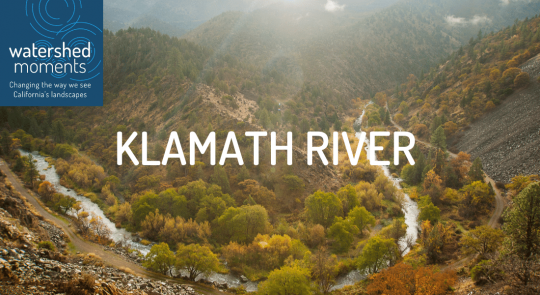Last Major Hurdle Cleared for Klamath Dams Removal
Today, an important step was made towards implementing what will soon be the largest U.S. river restoration project in history – removal of the lower four Klamath River dams. The final License Surrender Order for the Lower Klamath River Hydroelectric Project has been issued by the Federal Energy Regulatory Commission. With this last major hurdle cleared and the order secured, the project license will now be transferred to the states of Oregon and California and the Klamath River Renewal Corporation, the non-profit entity tasked with overseeing dam removal and related restoration efforts. Dam removal will begin in early 2023 and by end of 2024, all four Klamath dams will be gone.
We are thrilled to share this news following our 20+ year involvement in the dam removal process. “It’s been incredible for CalTrout to join forces with a multitude of Tribal Nations, conservation organizations, governments, and commercial and sport fishing interests in support of taking the Klamath dams out. Tribal leadership has been a central component of this effort. Notably, the Yurok, Karuk and Klamath River Tribes have been leading the effort to restore part of their cultural heritage and subsistence fishing. With the Klamath River being the second largest river in California, it represents a huge opportunity to achieve native wild salmon and steelhead abundance in a way that we haven’t seen for many decades.” – Curtis Knight, Executive Director of California Trout
The Upper Klamath-Trinity Rivers spring-run Chinook salmon was once the most abundant run on the river. Today, less than 3% remain in large part because the lower Klamath dams block access to prime historical salmon habitat in the Upper Klamath Basin. With the dams no longer in place, more than 300 miles of spawning and rearing habitat will once again become available to native fish.
Removing four major dams on the Klamath River has been no easy task, nor a quick one. Yet we remain confident and inspired that soon we will witness and experience a free-flowing, mighty Klamath River.
More on the Klamath…
We invite you to connect with the Klamath River watershed through CalTrout’s Watershed Moments, seeking to educate, enlighten, and engage you with key California watersheds where we are working to restore and protect waterways and lands.
Top cover photo by Dominic Bruno.
Klamath River photo by Val Atkinson.







6 Comments
I am not familiar with the Klamath directly and do not reside in California; however, this is the sort of news that invigorates the soul, fosters hope, and inspires similar actions elsewhere. Thanks to everyone who worked on this project!
What is the estimated time the Upper, Middle and Lower Klamath will remain unfishable due to siltation from the dam removal process? Has the construction determined a timeline for the removal process, other than the start time and finish time. Lodging reservations will be difficult to make without the information. Especially, if deposits for the reservations are non-refundable.
Congratulations to all of the groups involved. Most exciting thing I have experienced with Caltrout since Rush creek.
Fantastic hard work getting this done!!
What areas do you think will benefit the most as far as improved fishing after the dams are gone?
I have been fishing the klamath river drainage since 1956 when I was 11 years old. I lot of people fished the length of the river from the mouth to Klamath falls. Hopefully the fishery can be restored. The area has been heavily logged and the logs were towed down the river by small tugboats piloted by yurok indians.
A restoration of the river fisheries will be a huge financial benefit to the area.
I am pleased to hear of the removal of the hydroelectric dams on the Klamath Watershed. The article did not say anything about the dams, though., other then they were coming down. Assuming they served some real purpose, has something been planned to replace the electricity they did generate?